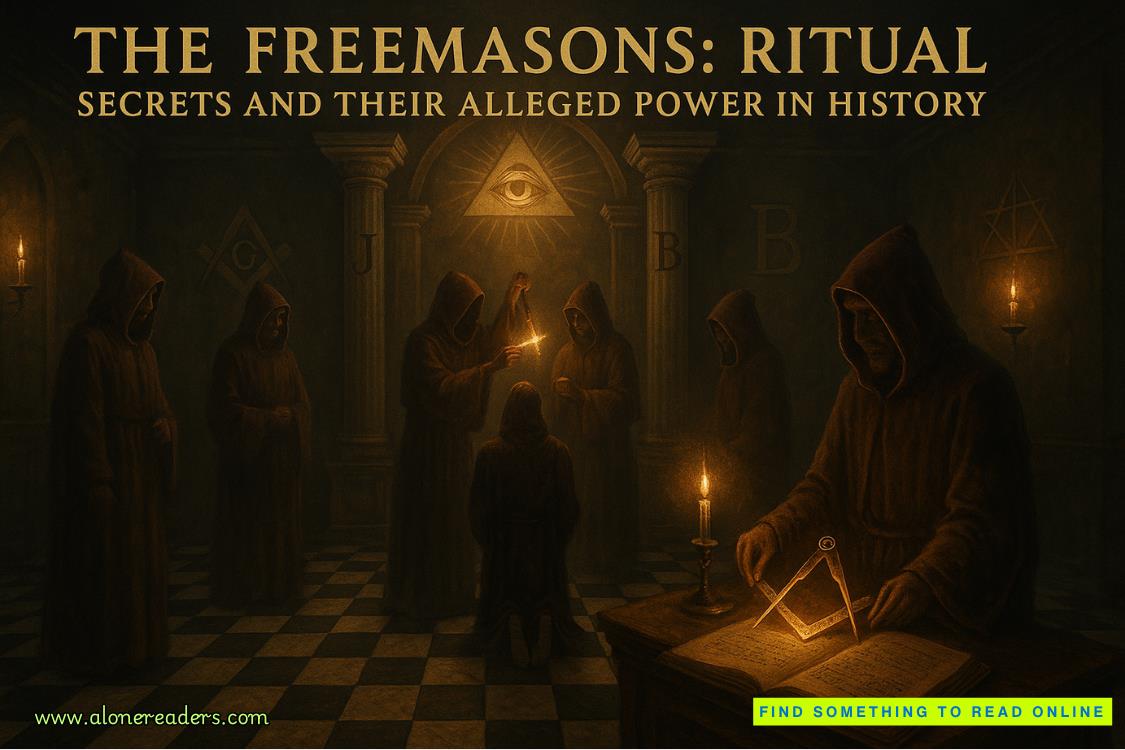Page 3 of The Perfect Wife
Many of us, of course, were already typing Abbie Cullen artist into our search engine of choice. (When you actually work in tech, using Google or Bing would be a bit like a craft brewer drinking Budweiser.) So pretty much instantly we knew the bare facts about her: that she had recently exhibited at SXSW and Burning Man; that she was originally from the South; that she was twenty-four years old, a redhead, tall and striking and a surfer; and that her website said, simply, “I build artifacts from the future.”
We had also found, and circulated, some video clips of her work. Seven Veils was a circle of electric fans, pointing inward at one another to create a vortex in which thin strips of colored silk tumbled and twirled perpetually. Earth, Wind, Fire was a cyclone of flame, bouncing like a roly-poly toy atop a gas burner as it battled competing blasts of air. Most spectacular of all was Pixels, a grid of dozens of what looked like Ping-Pong balls that floated as if on a cushion of air, but also interacted with the gallery visitor. Sometimes the balls seemed to flicker, like a shoal of fish; sometimes they pulsed lazily, like water streaming behind a boat, or formed almost recognizable shapes: a head, a hand, a heart. In one clip a child visiting the exhibit clapped her hands, causing the globes to drop abruptly to the floor before warily creeping back up, the way a herd of heifers noses up to a hiker. They were beautiful and strange and playful, and although they had no meaning or message you could easily take away, they also had a kind of purpose; they expressed something, even if what that something was couldn’t be put into words.
What had they to do with us? We were engineers, mathematicians, coders, developing intelligent mannequins for high-end fashion stores—shopbots, Tim’s big idea, the idea that had pulled in nearly eighty million dollars in start-up funding over the last three years. What did we need with an artist? We didn’t know. But we had long ago learned not to question Tim’s decisions.
He was a visionary, a wunderkind, the whole reason each one of us was at that company in the first place. What Gates was to personal computers, Jobs was to smartphones, or Musk was to electric cars, Tim Scott was to AI; or would be, very soon. We idolized him, we feared him, but even those who could not keep up and had to be let go respected him. And there were many of the latter. Scott Robotics was not just a business. It was a mission, a first-to-market blitzkrieg in a war to mold the future of humanity, and Tim was not so much a CEO as a battlefield commander, charging from the front, our very own Alexander the Great. His gangling physique, rock-star cheekbones, and goofy giggle failed to mask his iron determination, a determination he demanded from each of us in turn. Twenty-hour days were so common they were barely worth remarking on. The postdocs fresh out of Stanford who were his usual hires felt empowered, rather than exploited, by the insane work ethic. (On which subject, his interview technique was legendary. You were ushered into his cubicle, where he would be working on emails, and waited patiently for him to say—without looking up—“Go.” That was your cue to pitch why you wanted to work at his company. Assuming you passed, next came what was known as The Timbreaker. Sometimes it was a computational question: “How many square feet of pizza are eaten in the US each year?” More often it was philosophical: “What’s the worst thing about humanity?”—or practical: “Why are manhole covers round?” But mostly, it was to do with code. Such as: “How would you program an artificial politician?” And the answer you were required to give was not just theoretical: Tim expected you to come up with actual lines of working code, one after another, without the use of pen and paper, let alone a computer. If you did well, it was signaled by a single word, delivered in the direction of the emails he was still working on: “Cool.” If he said quietly, “That’s pretty lame,” you were out.)
His impatience—which was also legendary—was somehow another aspect of his charisma: proof that the mission was time-critical, that every second was precious. He even peed quickly, one employee reported after standing next to him at the urinals. (The employee, meanwhile, was afflicted with pee-shyness.) His speech was even faster—curt, precise, bombarding you with instructions or, occasionally, invective. Senior managers, or those who very badly wanted to be senior managers, were often noted to have picked up a trace of the same clipped London accent, so different from the languid, questioning inflections of Northern California. It was as if he were a force field that buckled those around him. If Tim looked you in the eye and said, “I need you to go to Mumbai tonight,” you felt exhilarated, because you alone had been given a chance to prove yourself. If Tim said, “I’m taking over your assignment,” you were crushed.
It was sometimes cultish. Not for nothing were we known in Silicon Valley as the Scottbots. The mission could be refined, but it could not be challenged. The leader might have his foibles, but he could not be wrong. At costume parties—paradoxically, Tim loved costume parties—where most people went as characters from Star Wars or The Matrix, he went as the Sun King, complete with buckled shoes, frock coat, outsized wig, and crown.
His background was another part of the legend. The impoverished childhood; the bullying that made him leave school at eleven to self-educate. The growing interest in chatbots, just at the time when people were starting to interact with e-commerce sites on their smartphones. The creation of Otto, a customer-service bot that, instead of being robotically polite and frustratingly obtuse, was efficient, smart, geeky, and cool—not unlike Tim himself, as many commentators remarked. Otto didn’t always spell correctly or use capital letters. He peppered his responses with emojis and witty allusions to nerd culture—quotes from South Park, catchphrases from sci-fi films. When you encountered Otto, you were convinced you’d just been put through to some wizard-level teen genius who would fix your problem for the sheer thrill of it. No one was surprised when Google bought Otto for sixty million dollars.
Then, at the age of twenty-three, Tim walked out of Google to found Scott Robotics, taking Mike with him. Their first success—put together in the aforementioned garage—was Voyce, a telephone helpline bot that was consistently ranked higher than human operators. More successes followed. Tim was obsessed by the idea that AI interactions should be lifelike. “One day the keyboard and mouse will seem as outdated as punch cards and floppy disks do now” was his mantra, along with “You don’t change the future without changing the rules.” The shopbots were a daring progression. Nothing like this had been attempted before—an AI that interacted with people physically, in person, without the medium of a screen or phone. But it made good, even brilliant, business sense. High-end retail mannequins already cost tens of thousands of dollars; salesclerks, too, were expensive, given that they often stood around doing nothing, and personal shoppers with a good eye and an exhaustive knowledge of a store’s inventory were time-consuming to train. Combining the three was a no-brainer. It was a sector ripe for disruption, and Scott Robotics—our tiny band—was going to be the first to disrupt it.
And now we were to have an artist to help us. Had we known, of course, where it would lead—had one of our expert futurologists been able to predict how things would turn out—we might not have been so sanguine about that. But even if we had known, would we have said anything? Frankly, it was unlikely. It was not the kind of company where you debated the direction of travel.
4
Tim’s silent on the way home. He was never one for small talk, but this is different. He seems almost exhausted.
This is what he was like after a big presentation to the investors, you remember. After weeks of living in the office, sweating every detail, he’d simply collapse, so drained of energy he could barely speak.
For your part, the sense of shock returns. The driver’s disgust is nothing to the revulsion and self-loathing you feel.
“It was what you’d have wanted,” Tim says at last. “Please believe that, Abs. I know it must feel strange right now, but you’ll get used to it. You were always the bravest person I knew.”
Were you brave? Memories flicker around the edges of your brain. Surfing a big wave at Linda Mar. Welding an artwork, the fiery sparks spitting into the blue lenses of your goggles. But then there’s nothing. Just fog.
You turn and look out the window, avoiding with a shudder the faint glimmer of your own reflection. San Francisco looks both familiar and new, like a foreign country you’re returning to after many years. An exile you don’t even remember. The buildings are mostly the same. It’s the details that have changed—the smartphones in people’s hands that have become larger instead of smaller, the electric bicycles everywhere, the white Priuses that have all but replaced yellow cabs. And the Mission has become even more gentrified, artisanal coffee shops on every block.
Then the driver makes a turn, and suddenly you don’t recognize anything. One moment everything is familiar. The next, fog has taken it away.











